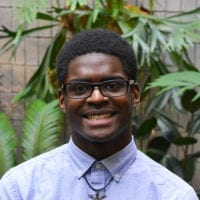
“Understanding DSB repair in the context of the synaptonemal complex”
Project Summary:
Meiotic recombination is initiated by the formation of double-strand breaks (DSBs) in chromosomal DNA, whose repair results in crossovers (COs) and non-crossovers (NCOs). This process occurs within the synaptonemal complex (SC), a proteinaceous structure crucial for creating and supporting the chromosome axis. The SC is made of the central element and the axes of two homologously paired chromosomes on either side of the central element. One of the central element proteins in maize is ZIPPER 1 (ZYP1). ASYNAPTIC 1 (ASY1) is a chromosome protein crucial for chromosome structure during early prophase I. Another key protein within the SC is DESYNAPTIC 2 (DSY2) which acts as a mediator between ZYP1 and ASY1.
During my project I gained a better understanding of the role of a variety of different proteins in the synaptonemal complex. By looking at the protein RAD51, which is involved in DSB repair during recombination, I was better able to visualize the effects of different conditions on recombination. In my research, maize anthers mutant for dsy2 were dissected to yield meiotic cells termed meiocytes. Using immunolocalization techniques I was able to label proteins of interest, such as ZYP1 and RAD51, with fluorescent antibodies allowing the visualization of these targeted proteins under a 3D microscope.
In addition, I also assisted in optimizing another type of immunolocalization protocol that involved making a spread of chromosomes on a slide rather than retaining intact meiocytes. This protocol separates the chromosomes better and allows for easier visualization of chromosome structure.
My Experience:
The REU I experienced in Wojtek Pawlowski’s lab has been a fantastic opportunity. Because this was my first true laboratory research experience, I was able to learn a lot about the research environment. I learned about the technique of immunolocalization and the process of using it. These techniques will be very beneficial to have learned in the future as immunolocalization is a great way to visualize proteins. I also was able to gain proficiency and training in multiple different tools such as a dissection microscope, 3D fluorescence microscope, super resolution microscope, and more.
I have also been able to gain insight into graduate education which will be essential when deciding on graduate schooling after obtaining an undergraduate degree. Furthermore, being able to see how people interact within the laboratory environment has also been great. I’ve learned that people don’t just focus solely on their own project but help each other in various projects as a community.
